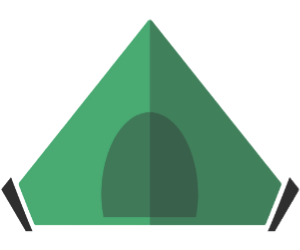
If you are an outdoor junkie like me, you got to learn how to choose a tent. After all, tents are considered to be among the essential gears for expeditions outside the urban jungle. However, which kind of tent depend on whether you are hiking, camping, backpacking, or enjoying other outdoor excursions.
Of course, I cannot highlight how vital a tent is. When you are in an outdoor setting, the tent serves as your shelter, and that should give you at least a compelling reason you shouldn't shrug this detail off.
Picking the right tent brand doesn't only give you convenience whenever you are camping or hiking. It also protects you from the harsh elements and potential disasters.
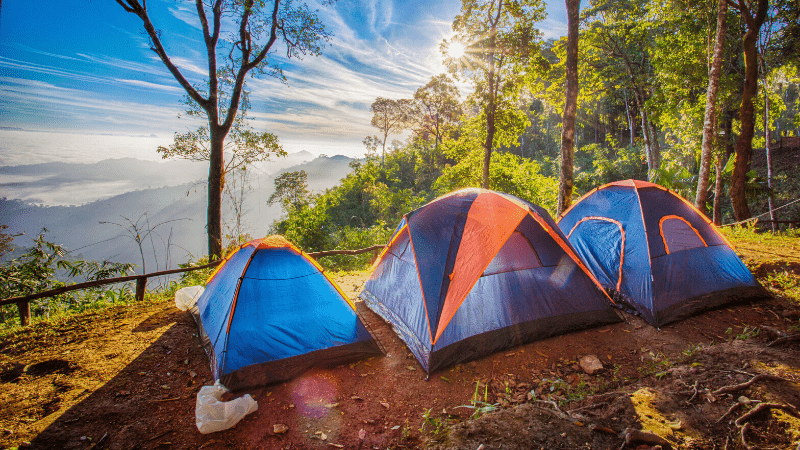
Tents vary in form and function. I have an in-depth discussion for that matter in one article that I have written.
Despite the variability that is present within the world of tents, I can't still deny that there are still fundamental aspects that tent manufacturers when building their tents.
Surely, you can also use these basics as your guidelines in examining if a particular tent is suitable for you and your intended purpose.
While this one appears to be simple and evident, I still have to remind everyone of the importance of determining the capacity of a tent.
Specifically, what I am talking about here is the size of the tent and how many people it can hold inside.
When gauging the tent's capacity, you just have to mind the number of users on a particular journey or adventure. Obviously, you don't need anything big if you are doing a solo hike.
On the flip side, you will need something bigger if you are car camping, and you with your friends and families. If you are camping as a duo, a two-person tent should be an excellent choice.
However, that should not be your only consideration here. You also have to see if the tent can also hold your other belongings.
Unless you intend to, leaving your camping equipment outside the tent is not an ideal move. They can easily be destroyed by the elements. Make sure that the tent can fit them inside, too!
Next, you should pay attention to the material that was used on the tent and its overall construction. The best tents out there are the most durable, and there's no arguing about that.
Needless to say, you should never settle for a flimsy tent. It wouldn't give you a good time once you camp in a jagger terrain or any other areas full of branches. A shabby will get ripped and worn on any of these settings.
The most common material used in the construction of a tent is a canvas. In fact, I can say that such material is already part of the long-winding tradition of making tents.
However, the commercial market already features better options than a canvas.
Specifically, I am talking about synthetic nylon fabric. Alternatively, you can also find units that are tailored from highly hybrid fabrics, such as the Dyneema--a maritime or military-grade fabric. There's also silnylon, which is an amalgamation of silicone and nylon.
All of these materials offer rigidity and durability that can withstand the test of time.
If you have been shopping for tents for quite some time already, you have probably encountered the term denier. Denier is the measurement used in the fabrics.
The denier refers to the structural sturdiness of a fabric. The higher the number, the stronger the fabric is.
Part of the anatomy of any outdoor tent is the number of walls that come with it. Right now, you have two options for this: single-wall and double-wall.
In the market today, most of the tents are constructed to be double-walled. The latter features a breathable layer on the interior and a rugged (usually waterproof) exterior that serves a rainfly.
This particular construction prevents internal condensation in the tent, which is wholly dreadful, by the way. Double-wall tents ensure that any form of condensation will be wicked off outside.
Of course, there are situations where a single-wall tent is quite useful. One of these is when you are in high-altitude terrains.
Specifically, you need tents that are extremely ventilated so that moisture can escape quickly before they are frozen by the low temperatures
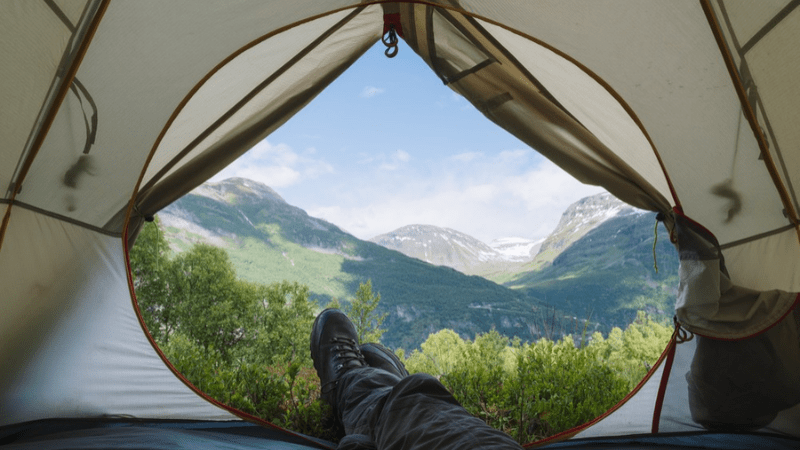
One of the aspects that determine the overall "livability" of a tent is its height.
Of course, I am not saying that short tents are not comfortable to dwell in. Instead, some people prefer to be able to move and stand while they are inside a tent.
Sure enough, tents for backpacking and hiking are not suitable for this. You can't expect a bivy tent to let you stand, let alone sit on it.
A cabin-type tent is a right choice for those who are looking for spacious outdoor shelters. The wall system of cabin tents are almost vertical; hence, it can maximize its overall interior space.
Some units out there are designed for large groups (8 to 12 people). They even feature extra perks like room dividers, doors, windows, and vestibules.
A dome-type tent is not big or tall. However, such weakness is compensated by its ability to negate strong winds and other severe weather elements.
Dome tents still have a decent interior space. But since their walls are slightly inclined, their interior space is drastically reduced.
Don't forget the length of the floor, too. If you have a height of more than 6 feet, then the floor of the tent should have a length of at least 90 inches. In this way, you can lie on it comfortably.
The accessibility of the tent is determined by the number and quality of its doors. If you are a solo camper, a single door should be enough already.
However, it is crucial that the tent provides a plethora of doors if you are with your family and friends. In this way, people will have an option where to enter and exit without causing congestion. In this particular context, cabin-type tents do excel.
Of course, you should also inspect the opening/closing mechanism of these tent doors. You wouldn't want the zippers to be rough and resistant.
The poles are a vital consideration in choosing a tent. Their overall structure indicates if a particular tent is easy to pitch or not.
Most of the tents that are sold today have a freestanding design; they don't require stakes before they can be erected. Of course, the advantage of this setup is versatility. You can move the tent anywhere you want without encountering difficulties.
Also, keep in mind that fewer poles mean that a particular tent can be erected faster. Setting up the poles is easier when you attach them to clips rather than threading to the tent's pole sleeves.
When choosing for poles, make sure that you pick those that are made from aluminum. Fiberglass might be strong, but it doesn't have the durability that can weather strong winds.
Don't ever confuse the rainfly from the roof of the tent. They are not the same thing.
The rainfly is a "detached" part of the tent that acts as a secondary roof. It offers extra protection against the rain, wind, and heat.
Some rainfly can only cover the roof of the tent, while others have broader coverage.
If you want to make due without a rainfly, purchasing a waterproof tent is perfect.
The tent must be breathable. You don't want to stay inside a tent that is too dense and hot; it will ruin your outdoor experience.
Ventilation does come in the form of windows and tents. Usually, these components have mesh panels that allow the entry of air while filtering insects and dust.
Some tents have vents integrated on their ceilings.
I cannot say that a vestibule is an integral part of every tent. However, it would benefit any user if this particular component is present in their tents.
These vestibules act like a garage. It is where you can store your dusty and muddy equipment, such as your boots. If the interior space is limited, you can use the vestibule as a storage for your backpacks.
The guylines are undeniably essential in the overall stability of a tent. They are the ones that ensure that your tent becomes taut when pitched.
However, some types of tents don't require guylines because of their inherent stability. A good example is the dome tent.
Of course, it would still be a prudent move if you attach these guylines to the tent even before you start your journey. Doing this will enable you to pitch your tent at a faster rate.
For a tent to be livable, it should provide means for you to store your items.
Some tents have loops on them where you can hang several items such as a lantern or your cloth. In fact, some loops are used for attaching a mesh shelf where you can organize your small items.
Of course, interior pockets are a blessing, too!
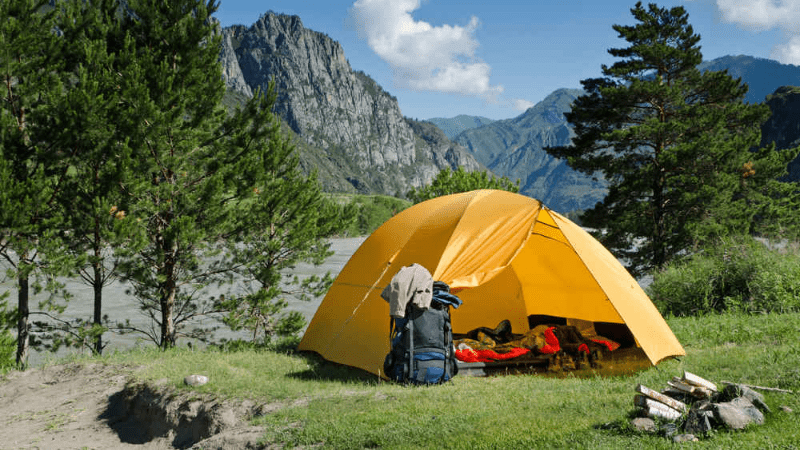
Again, let me emphasize that there's no "one-size-fits-all" solution to a tent's space capacity. Some are made for single-person use while others are for aggregate use.
Before you pick a tent, make sure that you are aware of how many people will use it. Our sizing guide would be perfect for you. If you are just car camping, you are free to choose big units as that can support large groups.
If you are hiking or trekking in a group, it is recommended that you get one-person or two-person tents. In this way, you will not be burdened by weight.
A tent's weight is not a problem if you are going to carry it in your vehicle. But if you are latching it in your backpack, that's another story.
"Travel lightly" is an adage that hikers and campers follow religiously. Even on the tent they bring, they are conscious of how much load it will add to their bodies.
Also, keep in mind that the term "maximum weight" also includes the rainfly, stakes, poles, and every accessory included in the tent.
Being able to account the floor area of a camping tent is important, too. If you require an elbow room or happen to be claustrophobic, then the tent you should pick must have a minimum floor area of 20 square feet.
If you are sleeping with another person, then the tent should have another 20 square feet of area.
Ergonomic Setup - The tent must allow you to pitch it quickly. The setup must be user-friendly and requires minimal assembly.
Breathability - Regardless of your purpose, it is important that the tent is breathable. It is difficult to stay inside a tent that is hot and humid. It is better to get a unit with ventilation points to ensure that you don't get sweaty, especially during summer and hot conditions.
Durability - There are multiple factors that consist of the durability and rigidity of the tent. Of course, one of these is the material. Make sure that the tent is constructed from heavy-duty hybrid fabrics such as synthetic nylon.
Moreover, for camping in the wilderness or highly-technical terrains, pick a tent that has a double-wall construction. It is a lot tougher than its single-wall counterpart.
Item Organization - You can also include this aspect into account, especially if you are bringing numerous items with you. The presence of pockets and loops ensures that your items will be secured.
If you are camping in rough terrains, it would be good if the tent you pick has a vestibule. There, you can put your dirty boots and equipment.
Weather Protection - Protect yourself from extreme heat and rain by acquiring a rainfly. Also, the tent should have a seamless construction so that water won't penetrate it.
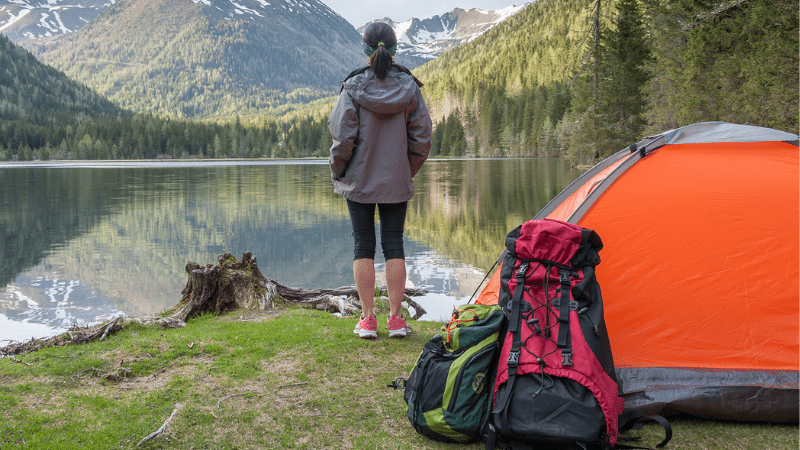
Backpacking tents are usually classified by their capacity. Most of the commercial options we have right now are available in one- to four-person capacity.
Of course, there's no standard when it comes to the specific dimension of these tents. Manufacturers vary their construction, and that's pretty understandable.
But if you are alone, you can pick those ultralight models. Bivy tents can fit the description as they tend to be extremely compact.
For those that require space for their party, I do recommend that they pick tents that are bigger than their actual group. Never pick the "exact size" as it will prevent you from moving comfortably.
For backpacking, weight is extremely crucial. Manufacturers are always careful about this part because they don't want their products to become a burden for their buyers.
Of course, there's a trade-off here. The lighter the tent becomes, the lesser its durability. Furthermore, it curtails the space and the possible features that could have been included in the tent.
Fortunately, modern tents did try to solve this problem. Ultralight tents, for instance, are quite rugged because of the heavy-duty materials used on them. Keep in mind that they are expensive, though.
Finding the right backpacking tent can help tremendously. Since backpacking and hiking are more arduous than the "regular" camping, it is essential that your gears provide sufficient comfort and protection to you.
But what makes a livable backpacking tent?
Floor plan - The total floor area of most tents today are not precisely rectangular. That's why it is not surprising if you can see irregular dimensions.
Regardless, it is essential that the floor area of a tent can accommodate your needs.
Height - When it comes to backpacking tents, standing up is no longer an option. You can only sit or bend a little.
You have to check the peak height of the tent to see if it allows you to sit straight.
Item Organization and Management - Again, backpacking requires you to take some essential items (i.e., survival knife sharpener and flashlights). You would want these items to be accessible at all times to ensure your safety.
Therefore, the tent that you should get must have pockets and loops. They will guarantee that the interior of the tent is not a mess!
Breathability - Make sure that the tent has ventilation points or mechanisms. Even if you lock the doors of your tent, you must never feel that you are being choked out of air.
Weather Protection - This is where the construction of the tent matters. A little too flimsy and the tent is susceptible to the harsh weather. Get a unit that has been built from sturdy materials.
Also, accessories like rainfly, poles, and guylines improve the overall capability of the tent to withstand the elements.
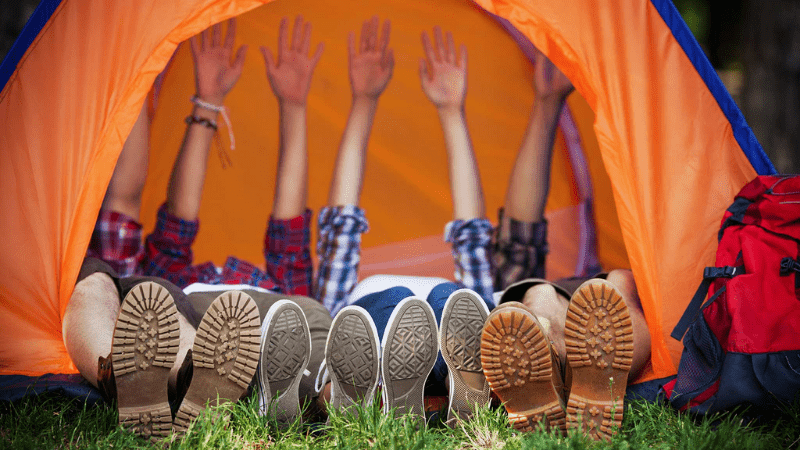
Leisure tents are usually for large groups of people. That's where tailgate and car camping do excel.
In this particular context, I do suggest that you get those large cabin tents. These have floor areas that are enormous enough to house a family. In fact, some models can even fit queen- and king-size beds!
But of course, you are still free to choose two- to four-person tents if you think a multi-room tent is too big for your needs.
Ergonomics - It is safe to say that leisure campers are not too well-versed when it comes to the setup of the tent. Hence, it is vital that the tent will not give them a difficult time in its assembly.
As much as possible, the tent must have a hassle-free setup to ensure that it fits for leisure purposes. Pop-up tents and inflatable tents are great for these purposes.
Accessibility - Tents for leisure are quite different from backpacking and camping tents, especially when it comes to function. Strictly speaking, leisure tents uphold "comfort and convenience" more than anything else.
Doors and windows play an essential aspect at this point. Multi-room cabin tents, for instance, feature multiple doors so that people can enter and leave anywhere they want. They have large windows, too, for sightseeing and extra ventilation.
Also, if you are going to pick a large tent, it is suggested that you get a unit that has several room dividers. They will play an essential role in providing organization and privacy.
Weather Protection - A decent tent for leisure is protective. Just because you are just having fun doesn't mean that your tent has to be a joke!
It should still be durable and rugged. Furthermore, it should be able to protect you from the heat of the sun or the rain. Rainfly and vestibules would be great here since they can offer added protection to the campers and their items!
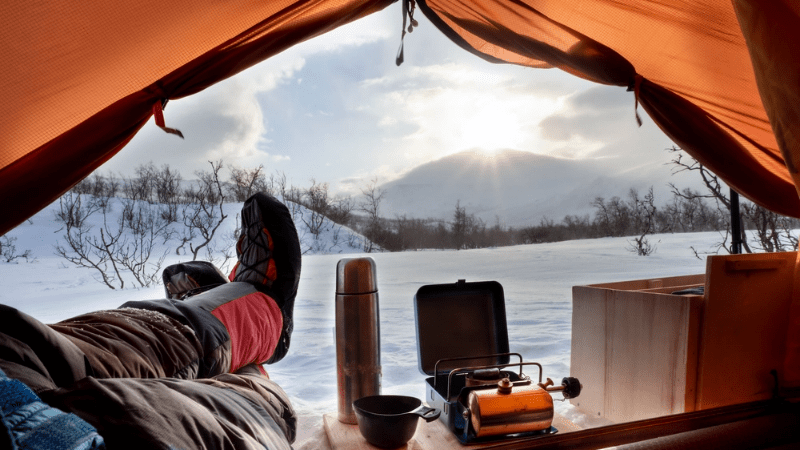
I can confidently say that 3-season tents are the most popular seasonality tents. After all, it is designed to be lightweight and compatible with the "ideal" conditions for camping.
Specifically, a 3-season tent is built for summer, spring, and fall. Its construction is strictly tailored to ensure that it can provide comfort and safety during the temperate seasons.
One of the most notable aspects of 3-season tents is their ventilation. You can see these tents equipped with a myriad of mesh panels to promote airflow. These mesh panels also stop insects from coming inside the tent.
Moreover, these 3-season tents also come with rainfly. Therefore, they are quite capable when it comes to dealing with rain. However, you should never use them if you are expecting rigid weather conditions such as heavy storms.
A 4-season tent is a step higher than 3-season tents. This one is the prime option for individuals who want to challenge Mother Nature!
A high-quality 4-season tent is highly durable and weather-proof. The word "tough" is an understatement to this particular tent.
It is capable of withstanding whatever atmospheric condition that you'll encounter in the wild. Moreover, it can conquer settings that are seriously unfriendly and threatening.
When choosing a 4-season tent, check the number of poles. The more they are, the better.
Also, don't forget the fabric. It should have a ripstop capability. The tent should be reinforced, too, to prevent water and moisture from entering.
These tents require a broad rainfly that stretches to the ground. It prevents ventilation, but at the same time, provides ample warmth and protection against the elements.
These are the essential things that you should know when it comes to choosing your next tent. It would be best if you keep this guide to guarantee that you can get the right unit for your intended outdoor needs.
Of course, that's the perk of learning how to choose a tent. It simply navigates you to the correct options, ensuring that you will not get a bad product.
That's it for now! If you have questions or suggestions, freely drop them in the comment section below.